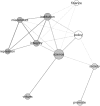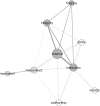Promoting Virtue or Punishing Fraud: Mapping Contrasts in the Language of 'Scientific Integrity'
- PMID: 27995445
- PMCID: PMC5705733
- DOI: 10.1007/s11948-016-9858-y
Promoting Virtue or Punishing Fraud: Mapping Contrasts in the Language of 'Scientific Integrity'
Abstract
Even though integrity is widely considered to be an essential aspect of research, there is an ongoing debate on what actually constitutes research integrity. The understanding of integrity ranges from the minimal, only considering falsification, fabrication and plagiarism, to the maximum, blending into science ethics. Underneath these obvious contrasts, there are more subtle differences that are not as immediately evident. The debate about integrity is usually presented as a single, universal discussion, with shared concerns for researchers, policymakers and 'the public'. In this article, we show that it is not. There are substantial differences between the language of research integrity in the scientific arena and in the public domain. Notably, scientists and policymakers adopt different approaches to research integrity. Scientists tend to present integrity as a virtue that must be kindled, while policy documents and newspapers stress norm enforcement. Rather than performing a conceptual analysis through philosophical reasoning and discussion, we aimed to clarify the discourse of 'scientific integrity' by studying its usage in written documents. To this end, large numbers of scientific publications, policy documents and newspaper articles were analysed by means of scientometric and content analysis techniques. The texts were analysed on their usage of the term 'integrity' and of frequently co-occurring terms and concepts. A comparison was made between the usage in the various media, as well as between different periods in which they were published through co-word analysis, mapping co-occurrence networks of significant terms and themes.
Keywords: Co-word analysis; Discourse; Research integrity; Scientific integrity; Scientific misconduct; Scientometrics.
Figures






Comment in
-
When it comes to good practice in science, we need to think global but act local.Nature. 2019 Dec;576(7786):181. doi: 10.1038/d41586-019-03782-z. Nature. 2019. PMID: 31827300 No abstract available.
References
-
- Abma R. De publicatiefabriek: Over de betekenis van de affaire Stapel. Nijmegen: Uitgeverij Vantilt; 2013.
-
- Ashmore M, Myers G, Potter J. Discourse, rhetoric, reflexivity: Seven days in the library. In: Jasanoff S, Markle GE, Petersen LC, Pinch TJ, editors. Handbook of science and technology studies. Thousand Oaks: Sage; 1995.
-
- Bretag T, Carapiet S. A preliminary study to identify the extent of self-plagiarism in Australian Academic Research. Plagiary: Cross-disciplinary studies in plagiarism, fabrication, and falsification. Ann Arbor: MPublishing, University of Michigan Library; 2007.
-
- Callon M, Courtial JP, Laville F. Co-word analysis as a tool for describing the network of interactions between basic and technological research: The case of polymer chemsitry. Scientometrics. 1991;22(1):155–205. doi: 10.1007/BF02019280. - DOI
MeSH terms
Grants and funding
LinkOut - more resources
Full Text Sources
Other Literature Sources
Medical

